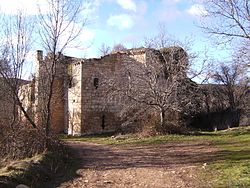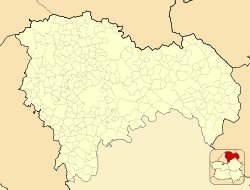This article needs additional citations for verification .(April 2024) |
Retiendas, Spain | |
|---|---|
 | |
| Coordinates: 40°58′19″N3°16′28″W / 40.97194°N 3.27444°W | |
| Country | |
| Autonomous community | Castile-La Mancha |
| Province | Guadalajara |
| Municipality | Retiendas |
| Area | |
• Total | 20 km2 (7.7 sq mi) |
| Population (2024-01-01) [1] | |
• Total | 53 |
| • Density | 2.7/km2 (6.9/sq mi) |
| Time zone | UTC+1 (CET) |
| • Summer (DST) | UTC+2 (CEST) |
Retiendas is a municipality located in the province of Guadalajara, Castile-La Mancha, Spain. According to the 2004 census (INE), the municipality has a population of 50 inhabitants.




